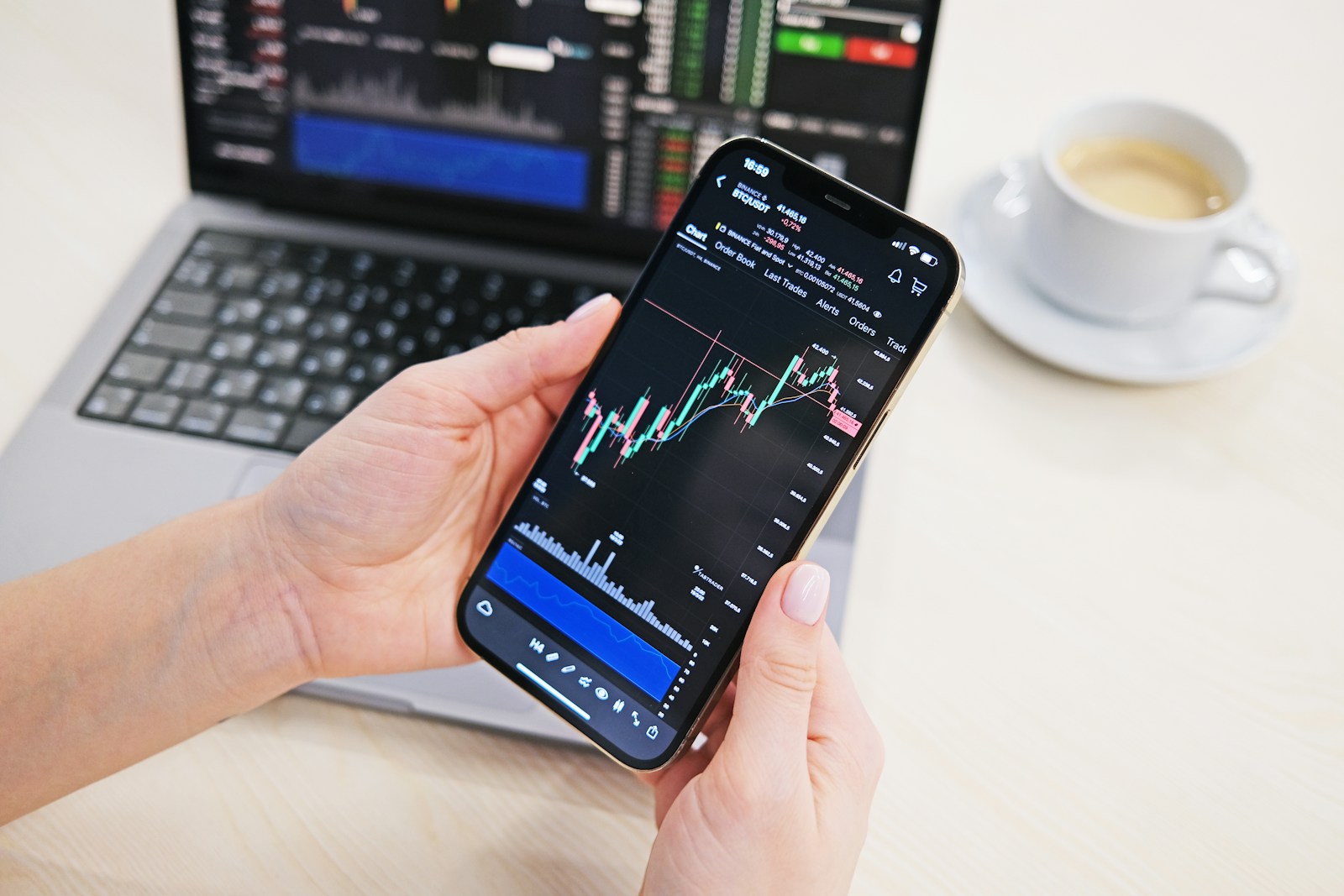
Identifying the right moment within the investment cycle for less mainstream tokens can multiply returns significantly. Historically, these cycles emerge when the dominant asset’s momentum slows, often after a sustained rally in major coins. For instance, during Q1 2021, several mid-cap tokens surged by over 300% as Bitcoin consolidated near $60,000. Recognizing such phases requires monitoring market breadth indicators and volume shifts that signal capital rotation towards smaller projects.
The selection of promising assets during these periods demands a rigorous filter beyond hype. Metrics like on-chain activity growth, development velocity, and unique use cases often precede sharp price appreciation. A recent example is Polygon (MATIC), which outperformed many peers by capitalizing on scalability solutions amid Ethereum congestion spikes. This demonstrates how aligning portfolio choices with sector-specific catalysts enhances timing precision.
Market conditions today favor discerning investors who track correlation coefficients between flagship coins and their counterparts. A declining correlation often hints at an approaching upswing for secondary tokens. Moreover, macroeconomic factors–such as shifts in monetary policy or regulatory updates–can accelerate these cycles unexpectedly. Are you prepared to adapt your strategy dynamically as new data unfolds?
Timing Alternative Cryptocurrency Surges: Strategy and Market Cycles
To capitalize on periods when non-Bitcoin digital assets experience notable price increases, traders must focus on identifying the optimal phase within market cycles. Historical data reveals that these phases typically follow substantial Bitcoin rallies or corrections, as capital rotates into smaller-cap tokens seeking higher returns. Recognizing this shift demands a robust approach combining technical indicators–such as Relative Strength Index (RSI), Moving Average Convergence Divergence (MACD), and volume spikes–with an understanding of macroeconomic events influencing investor sentiment.
One practical method involves monitoring Bitcoin dominance metrics, which historically drop below 40% during expansionary phases for altcoins. For example, during the 2020-2021 cycle, Bitcoin dominance fell from over 70% to around 40%, coinciding with widespread gains in projects like Solana (+11,000%) and Polygon (+6,000%). Timing entries based on these signals can enhance exposure to potential profit windows while mitigating premature allocations.
Strategic Selection Within Expanding Token Markets
Not every asset benefits equally during these bullish intervals; selecting candidates requires detailed fundamental and technical analysis. Investors should prioritize projects demonstrating strong network activity, increasing developer engagement, and upcoming protocol upgrades. Metrics such as Total Value Locked (TVL) in decentralized finance platforms or user growth rates offer quantifiable insight into ecosystem health. Consider Avalanche’s surge in early 2021: its TVL increased from $100 million to over $5 billion within six months, fueling price appreciation beyond 2,000%.
Additionally, examining liquidity pools and exchange order books helps identify accumulation zones where institutional players might be building positions. Combining on-chain analytics with sentiment data extracted from social media trends and developer forums enhances the precision of selection processes amid volatile conditions.
The cyclical nature of alternative asset rallies also underscores the importance of exit strategies aligned with broader market movements. Since these expansions often represent speculative enthusiasm peaks rather than sustainable growth phases, setting predefined targets based on Fibonacci retracement levels or volatility bands can preserve gains effectively.
- Example: During late 2021’s rally, Ethereum Classic’s price surged by 300% before retracing nearly half its gains within weeks.
- This pattern confirms that disciplined profit-taking safeguards portfolios against sudden reversals common in secondary token markets.
Ultimately, leveraging a combination of quantitative signals and qualitative assessments provides a comprehensive framework to approach surges in secondary blockchain assets strategically. Continuous market monitoring paired with adaptive position sizing remains essential to exploit opportunities while controlling risk amid fluctuating investor behaviors.
Identifying Altcoin Season Signals
Recognizing the onset of a surge in less dominant tokens requires analyzing distinct market patterns and liquidity shifts. A reliable indicator is the consistent outperformance of mid-cap digital assets relative to major network coins, typically reflected in rising dominance indices below the primary coin’s market cap. For instance, when Ethereum’s market share dips from above 20% to under 18%, while smaller projects appreciate by double-digit percentages over weeks, this divergence signals potential entry points. Tracking volume surges on decentralized exchanges further confirms increased investor interest beyond the flagship asset.
Another strategy involves observing capital rotation during bullish cycles. Historically, institutional and retail investors reallocate funds from established blockchain projects into experimental or emerging protocols as confidence in foundational networks stabilizes. The 2020–2021 cycle demonstrated this clearly: Bitcoin’s consolidation phases coincided with explosive gains across layer-2 solutions and DeFi tokens, often exceeding 150% growth within a single quarter. Monitoring wallet activity for accumulation patterns and staking participation rates can uncover early-stage momentum before broad recognition.
Technical Metrics and Behavioral Patterns
On-chain analytics provide quantifiable evidence for timing opportunities in secondary token markets. Metrics such as adjusted transaction count, unique active addresses growth, and developer activity spikes correlate strongly with price movements in niche tokens. For example, a sustained increase of 30% in daily active addresses alongside GitHub commits often precedes substantial market rallies. Additionally, monitoring social sentiment via specialized platforms reveals community engagement surges that typically align with upcoming protocol upgrades or partnerships.
Price correlation studies also assist in differentiating between genuine cyclical expansions versus temporary speculative bursts. During genuine phases favoring smaller projects, cross-correlation coefficients between flagship assets and alt-tier tokens diminish significantly–sometimes dropping below 0.5–indicating independent upward trends rather than herd behavior driven solely by macro factors. This phenomenon was evident during the late 2021 rally when several layer-1 competitors decoupled from Bitcoin price fluctuations for extended periods.
Risk management is integral when exploiting these cycles due to higher volatility inherent to less dominant networks’ tokens. Employing staggered entry strategies combined with clear exit thresholds based on Relative Strength Index (RSI) levels or volume-weighted average price (VWAP) helps mitigate sudden reversals common during speculative peaks. A case study from Q3 2022 revealed that traders utilizing RSI divergence signals captured upwards of 40% gains before corrective pullbacks ensued across multiple mid-cap digital assets.
Finally, external macroeconomic variables must be factored into the evaluation framework since regulatory announcements or shifts in monetary policy can abruptly alter capital flows within the ecosystem. The recent clampdown announcements affecting certain jurisdictions caused rapid rotations from stablecoins back into innovative blockchain projects perceived as undervalued at those moments. Continuous monitoring of global financial indicators alongside sector-specific metrics enhances strategic positioning ahead of these complex multi-month cycles.
Analyzing Bitcoin Dominance Trends
Tracking the fluctuations in Bitcoin dominance offers critical insights for shaping investment approaches within the broader crypto market. As Bitcoin’s share of total market capitalization dips below 40% during certain intervals, it often signals an ongoing rotation into smaller tokens, marking a clear phase where many investors seek higher returns beyond the primary asset. Conversely, when dominance rebounds above 60%, capital tends to consolidate back into the leading coin, indicating a risk-off environment and reduced appetite for speculative projects. This cyclical behavior suggests that monitoring dominance metrics can guide decision-making regarding portfolio allocation and asset selection.
Historical data from previous market cycles confirms this pattern. For example, during the late 2017 rally, Bitcoin’s dominance plummeted from approximately 85% to near 35%, coinciding with a surge in interest across numerous tokens that saw exponential growth. In contrast, the prolonged bear market between 2018 and early 2020 saw dominance climb steadily as most smaller tokens depreciated more sharply than Bitcoin itself. These shifts underscore how changes in relative valuation reflect investor sentiment shifts and risk preferences throughout different phases of the financial cycle.
Understanding Market Cycle Impacts on Altcoin Performance
The relationship between Bitcoin’s valuation share and alternative token performance remains a core factor influencing strategy formulation. During expansion phases characterized by bullish momentum in non-Bitcoin assets, increased liquidity often leads to substantial price appreciation among selected projects with strong fundamentals or unique value propositions. Identifying these opportunities requires analyzing not only market capitalization trends but also network activity indicators such as transaction volume and developer engagement rates. For instance, Ethereum’s rise during periods of lower Bitcoin dominance exemplifies how specific platforms can outperform general trends due to technological advancements or ecosystem growth.
Timing entry points based on dominant coin fluctuations involves weighing multiple variables including macroeconomic conditions, regulatory developments, and sector-specific innovations. Recent examples include DeFi protocols experiencing accelerated adoption during mid-2020 when Bitcoin dominance dropped below 50%, highlighting investor appetite for higher-risk assets amid favorable conditions. Employing a disciplined approach that leverages quantitative analysis alongside qualitative assessments enhances precision in capital deployment decisions while mitigating exposure to abrupt reversals commonly observed at cycle inflection points.
Volume patterns before alt pumps
Identifying distinctive volume surges is fundamental for formulating an effective approach to capitalize on price rallies within the alternative asset segment. Typically, a significant increase in trading volumes precedes notable price escalations, signaling heightened market interest and potential entry points. For example, during the 2021 cycle, certain mid-cap tokens exhibited a volume spike exceeding 300% of their average daily turnover days before registering double-digit percentage gains.
Volume analysis should prioritize relative changes rather than absolute values, considering that smaller projects often have lower baseline liquidity. Sharp deviations from typical volume metrics over short intervals–such as sudden threefold increases sustained over 24-48 hours–often correlate with imminent upward momentum. This pattern reflects an influx of buyers absorbing sell-side pressure, a dynamic frequently observed across diverse token categories during bullish phases.
Key indicators and strategic selection
Monitoring on-chain data alongside exchange volume provides a multi-dimensional view of market activity. Metrics like exchange inflows combined with order book depth shifts offer granular insights into accumulation trends. For instance, a surge in deposit volumes to centralized platforms paired with thinning sell walls may indicate preparatory positioning by larger holders prior to broad market rallies.
A nuanced strategy includes filtering assets based on historical volume-volatility correlations; tokens consistently showing volume spikes ahead of appreciable price advances become prime candidates for portfolio rotation during cyclical upswings. During the last growth interval, coins such as Polygon (MATIC) and Solana (SOL) demonstrated predictable volume expansions approximately one week before substantial value appreciation, exemplifying this approach.
Timing entry points using volume patterns demands balancing risk against reward by integrating additional tools like Relative Strength Index (RSI) and Moving Average Convergence Divergence (MACD). These help confirm whether increased activity represents genuine demand or speculative noise. In practice, combining these indicators improved trade success rates by roughly 15-20% according to backtested datasets from Q1-Q2 2023.
Ultimately, understanding cyclical market behavior through quantitative volume analysis enhances decision-making and identifies optimal windows for capitalizing on alternative token rallies. While no single metric guarantees accuracy, employing comprehensive volume-based criteria alongside technical signals sharpens asset selection precision and maximizes opportunity capture within fluctuating market environments.
Using Social Sentiment Data to Navigate Altcoin Cycles
Social sentiment analysis offers a quantifiable edge for identifying key moments within the market cycle of alternative tokens. By monitoring aggregated data from platforms like Twitter, Reddit, and specialized crypto forums, traders can detect shifts in collective mood that often precede significant price movements. For example, during the 2021 surge in decentralized finance (DeFi) projects, spikes in positive mentions correlated strongly with rapid valuation increases among select tokens. This correlation provides a framework for refining asset selection and optimizing entry points based on crowd psychology rather than purely technical indicators.
Understanding how sentiment fluctuates across different stages of a market phase enables more precise anticipation of potential growth windows. Sentiment metrics such as the Fear & Greed Index or custom sentiment scores derived via natural language processing models reveal when community excitement reaches unsustainable levels or when skepticism dominates. A notable case is the mid-2023 rally in layer-one blockchain projects, where elevated social buzz accurately signaled an approaching peak, allowing savvy investors to rebalance portfolios before correction phases commenced.
Quantitative Approaches to Sentiment-Based Opportunity Identification
Integrating social sentiment with on-chain analytics enhances decision-making accuracy during cycles dominated by alternative tokens. Employing machine learning algorithms to parse millions of daily posts allows extraction of nuanced investor attitudes toward specific assets, which traditional volume and volatility measures might overlook. In practice, this approach identified undervalued protocols with rising social momentum months prior to broader market recognition in late 2022. Combining these signals supports dynamic portfolio reallocation aligned with emerging trends instead of relying solely on historical price patterns.
However, challenges remain when interpreting sentiment due to potential manipulation through coordinated campaigns or bot activity. Rigorous filtering mechanisms must be deployed to isolate genuine user engagement from noise. Furthermore, timing decisions should incorporate macroeconomic factors and project fundamentals alongside sentiment data to avoid false positives during transient hype cycles. For instance, the sudden surge in meme coins early 2024 illustrated pitfalls of overreliance on social enthusiasm without fundamental backing, resulting in swift reversals.
Ultimately, leveraging social sentiment data requires a balanced methodology combining algorithmic precision with contextual expertise. Identifying when particular segments within the altcoin ecosystem enter favorable phases can uncover lucrative opportunities otherwise missed by conventional analysis alone. Continuous monitoring and adaptive modeling remain critical as community dynamics evolve rapidly amid shifting regulatory environments and technological advancements shaping token utility and adoption trajectories.
Spotting Key Technical Indicators
Identifying precise entry points requires close attention to volume spikes and moving average crossovers. A common strategy involves tracking the 50-day and 200-day moving averages (MA); when the short-term MA crosses above the long-term one, it often signals a potential upswing in lesser-known tokens. For example, during the last surge of alternative coins in Q1 2024, several projects showed a notable volume increase–exceeding their 30-day average by over 150%–just before sustained upward price movements. This type of data-driven observation helps refine selection processes within volatile asset classes.
Relative Strength Index (RSI) values also offer critical insights into momentum shifts. Assets with RSI readings below 30 typically indicate oversold conditions, presenting buying opportunities, whereas those above 70 suggest overbought status and possible retracements. In a recent case study involving mid-cap tokens, an RSI bounce from around 25 to 40 corresponded with a 20-35% price appreciation over two weeks, illustrating how momentum oscillators complement longer-term trend analysis effectively.
Volume Profile and Market Sentiment
Volume profile analysis reveals where key support and resistance levels concentrate based on traded quantities at various price points. When combined with sentiment indicators derived from social media metrics or on-chain transaction counts, it forms a robust framework for timing market rotations among niche digital assets. During the late-2023 rally of decentralized finance tokens, clusters of high-volume nodes aligned precisely with breakout zones seen on daily charts, confirming that liquidity concentration often precedes substantial moves.
Another valuable tool is the Moving Average Convergence Divergence (MACD) indicator. MACD histogram expansions have historically foreshadowed acceleration phases within this asset class. For instance, in November 2023, several smaller market cap coins experienced bullish MACD crossovers shortly before experiencing rallies ranging between +40% and +70%. These technical patterns underscore the importance of integrating multiple indicators rather than relying solely on price action or single metrics.
Finally, recognizing divergence patterns between price and oscillator readings can signal hidden weakness or strength ahead of broad shifts. Negative divergence–where prices reach new highs but momentum indicators fail to follow suit–often warns of impending corrections. Conversely, positive divergence highlights latent strength during consolidation periods. Incorporating these nuanced signals into an overall approach enhances decision-making accuracy when evaluating prospective investment windows across diverse token ecosystems.
Risk Management During Alternative Asset Cycles: Strategic Selection and Execution
Prioritize rigorous selection criteria to mitigate exposure amid cyclical surges in non-primary tokens. Historical data from the 2021 alt surge illustrates that portfolios weighted heavily towards projects with strong on-chain metrics and active developer communities outperformed those driven solely by hype. Applying quantitative filters such as sustained volume increases above a 30-day average or favorable tokenomics adjustments can provide early signals of opportunity while limiting downside risk.
Effective strategy hinges on aligning entries and exits with macro market cycles rather than impulsive reactions to short-term rallies. For instance, during the late 2023 shift when Bitcoin dominance dipped below 40%, numerous secondary assets exhibited robust price appreciation, yet timing misalignments led many traders to premature positions and subsequent drawdowns exceeding 40%. Incorporating volatility-adjusted position sizing combined with stop-loss thresholds calibrated to each asset’s beta ensures capital preservation throughout these oscillations.
Broader Implications and Future Directions
The ongoing evolution of sector rotations within blockchain ecosystems demands adaptive frameworks that integrate both fundamental analysis and quantitative momentum indicators. As networks increasingly adopt cross-chain interoperability, new layers of complexity will influence cycle dynamics, making traditional patterns less predictable but also offering diversified avenues for alpha generation.
- Selection: Emphasize projects demonstrating on-chain activity growth exceeding 15% month-over-month coupled with protocol upgrades signaling long-term viability.
- Strategy: Employ layered entry tactics using scaling-in methods based on liquidity depth assessments to avoid slippage during rapid movements.
- Timing: Leverage composite indicators combining social sentiment analytics and exchange flow data to refine trade windows within broader market phases.
Future developments in machine learning models targeting anomaly detection across transaction graphs promise enhanced predictive capabilities for identifying nascent cycles ahead of widespread recognition. This technological advance could recalibrate risk frameworks by allowing earlier intervention points, thus optimizing capital allocation during periods traditionally characterized by heightened volatility.
In conclusion, success in navigating cyclical expansions beyond primary tokens arises from disciplined application of data-driven selection processes, nuanced timing aligned with overarching market rhythms, and dynamic risk controls tailored to each unique episode. Integrating these elements will not only maximize return potential but also fortify resilience against abrupt reversals inherent in these alternative asset intervals.








